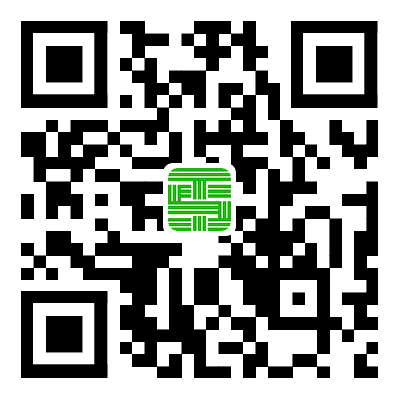
At present, many dyeing and finishing enterprises often mix the prescriptions of dip dyeing, roll dyeing, and pad dyeing when determining dyeing prescriptions. They lack understanding and practice of the internal connections between the three different processing methods and cannot fundamentally solve practical problems. Different processing methods may use the same dyes and chemicals, but the methods used may vary greatly, and the use of additives may also vary. Practical experience tells us that when formulating process prescriptions, it is important to choose according to production characteristics.
1. Pad dyeing
Pad dyeing (long car) often uses composite materials, and even the three materials are all composite materials. Moreover, for each sample placed on the long car, the cloth is usually around 10CM. If the prescription is modified again, another sample needs to be placed until it meets the color requirements, the fabric surface is good, and there are no quality issues before formal production can be started. At present, overflow roll dyeing no longer adopts the method of placing intermediate samples before mass production. Instead, the fabric is lowered and directly fed into the vat for production. If the color and light are found to be incorrect, the color matching principle is used to directly add materials and repair colors in the dyeing vat.
Due to the significant differences in layout methods and the characteristics of various dyeing methods, it is not possible to transfer some composite materials from pad dyeing to overflow and roll dyeing. Because during the large-scale production of composite materials, if a certain color light is missing, the more the color light is added, although it can also be reversed, it will become dark and color biased. The composite material moves the whole body at the same time, including red, yellow, and blue. Sometimes the missing color is unknown, making it difficult to determine which one of the composite materials to correct. If a certain material with missing three primary colors is directly added, it is very difficult to directly repair the color without making a small sample because it is not included in the prescription and has no quantity basis. If a composite material is required for certain special colors, at most one material other than black should be used, and the other two materials should be matched with the most basic three primary colors. Even so, the basic composition of this composite material must be clear, otherwise when the missing color light is not these two primary colors, it will become darker and more color biased.
2. High temperature overflow and roll dyeing
The three primary color formula used for high-temperature overflow and high-temperature roll dyeing, which disperses high-temperature and low-temperature materials and sometimes combines them together, will not cause problems in production. However, when using this prescription for pad dyeing (long car), it is necessary to consider whether the left and right temperatures of the long car baking machine are strictly consistent, and whether there will be left and right color differences. It is best to use the method of combining high-temperature materials and low-temperature materials.
For woven pure cotton and polyester cotton products, some medium and light colors are often dyed with composite earth forest dyes in pad dyeing. If this prescription is used in dip dyeing, the difficulty of dyeing will increase, especially for pure cotton fabrics, which are prone to color defects, high costs, and severe sewage. When there is a deviation in color light, it is difficult to add colors, far less convenient, economical, and practical than dyeing with reactive dyes.
For overflow and roll dyeing, many manufacturers still use the long car layout mode, placing a sample once on the prototype, modifying the prescription once, and then setting out again until the sample meets the requirements before large-scale production. This approach is neither economical nor effective. Because even if the middle sample is placed first and then the large sample is placed, due to the differences between the large and middle samples, the amount of fabric loaded, additives, bath ratio, operation, and other reasons, the color light will still vary from time to time, and even the prescription will be completely the same. At the same time, dyeing in two "same" dyeing tanks will result in different color lights. In the current high color light requirements and strict circumstances, it is obviously not feasible to add materials and repair the color; A lot of cloth will be used for placing the middle sample each time, causing waste, especially in the external processing, customer cloth is allowed to be wasted, and reproduction after placing the middle sample is not allowed in terms of time; The practice is disconnected from large-scale production, and due to many reasons, there may be differences in color and brightness between the large sample and the approved small sample. It is necessary to quickly and accurately correct the color. However, the practice of placing the middle sample each time cannot cultivate this work ability and is contrary to advanced production methods. Therefore, it is necessary to cultivate the ability to use three primary colors in a targeted manner, in order to facilitate quick and convenient color correction in dip dyeing and roll dyeing, especially when the deviation is not significant. The use of certain color light composite materials has its advantages in long-distance transportation, and there is no problem of only adding materials upwards. The current advanced production method of overflow roll dyeing determines the characteristics and advantages of using three primary colors, and can also better utilize the residual color principle in color matching knowledge. If composite materials are used, yellow materials are used in brown, green, olive colors, etc., blue materials are used in gray, black, etc., and red materials are used in brown, orange, etc. Although some color samples are convenient and fast, it is difficult to directly fix color and light deviations in large-scale production, resulting in discrepancies between the large and small samples and causing economic losses to the enterprise. At present, many dyeing and finishing enterprises often mix the prescriptions of dip dyeing, roll dyeing, and pad dyeing when determining dyeing prescriptions. They lack understanding and practice of the internal connections between the three different processing methods and cannot fundamentally solve practical problems.
The fixation rate must be higher than 70%, and the difference between the ultimate dyeing rate and fixation rate must be less than 15% to reduce the floating color of the dyed fabric. The one-time dyeing rate of the dye should not exceed 75%, so that the floating color can be easily removed; Moreover, it is necessary to choose dyes with high dye lifting power, which means that the amount of dye used during deep shade dyeing cannot exceed 10% of the fiber's saturated adsorption capacity.
The dyeing process is also very important, and removing floating colors is the key. Hard water is not conducive to removing floating colors and must be softened. It is best to use non-contact drying. Functional finishing can cause strong damage to the fabric and increase colored fiber particles, which must be controlled to a minimum. Finally, if treated with specialized additives to improve wet treatment fastness, the wet friction fastness of deep concentration reactive dye dyed fabrics can be improved by 0.5 to 1.0 levels.
About
Brief introduction Application Certificate Laboratory Connectproduct
Post finishing agent Enzymatic water Brightener Printing/Coating Additives MoreNews
Dynamic Lnformation Common
Mobile website

TRL:+86 0769-88124837
Chinese mailbox:dgtshdrl@163.com
English mailbox:postmaster@tianshengchem.com
Guangdong Tiansheng Environmental Protection New Material Technology Co., Ltd. Copyright © 2023 all rights reserved